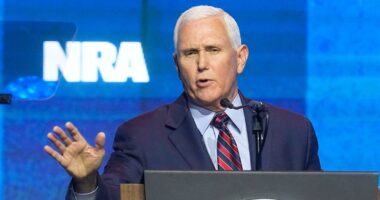
The Federal Reserve’s policy meeting and U.S. retail sales highlight this week’s economic news.
Monday
Economic data from China is expected to look especially robust this week as base effects flatter year-over-year comparisons. Retail sales, a key gauge of consumption, are forecast to grow 31.3% from a year earlier during the January to February period, according to economists surveyed by The Wall Street Journal. Fixed-asset investment likely grew 38.2% from a year earlier, and industrial production may have rebounded 30.5% on year. The hefty annual increases overstate recent growth trends, given that China’s economy was flattened during the early months of 2020 as authorities worked to contain Covid-19.
Tuesday
U.S. retail sales posted their largest monthly gain in seven months in January as consumers spent another round of stimulus checks. February might be a step back. Forecasts for Tuesday’s report range widely, reflecting uncertainty. But generally, economists expect the one-time boost from checks to have faded, and bad weather across much of the country to have held back spending last month.
U.S. industrial production is expected to soften in February, partly due to disruptions caused by bad weather, chip shortages and other snarls in global supply chains. “Underlying demand is robust, though, and we expect the weakness in production to be short-lived,” economists at Credit Suisse said.
Wednesday
The Federal Reserve releases a policy statement and revised economic projections. Policy makers at the U.S. central bank are likely to upgrade forecasts for gross domestic product, inflation and employment—but also to signal a long path to full recovery and indicate that there are no plans to raise interest rates or otherwise tighten policy any time soon.
Thursday
The Bank of England is likely to stand pat this week as policy makers gauge the pace of economic recovery and the outlook for inflation. The U.K. suffered its worst downturn in more than 300 years in 2020, but officials expect a strong rebound in the second half of this year.
U.S. jobless claims are approaching their lowest level since the pandemic hit—but remain historically elevated. Little is expected to change in the week ended March 13, with the latest figures on applications for unemployment benefits still indicating a high level of layoffs across the country.
Friday
Bank of Japan officials meet Thursday and Friday to review monetary policy. BOJ Gov. Haruhiko Kuroda has said the bank planned to maintain the overall framework of its current easing, including the negative-interest-rate policy and the 2% inflation target. The board is set to discuss how to make its easing program more efficient and sustainable after the pandemic made it more difficult to achieve 2% inflation.
Copyright ©2020 Dow Jones & Company, Inc. All Rights Reserved. 87990cbe856818d5eddac44c7b1cdeb8








